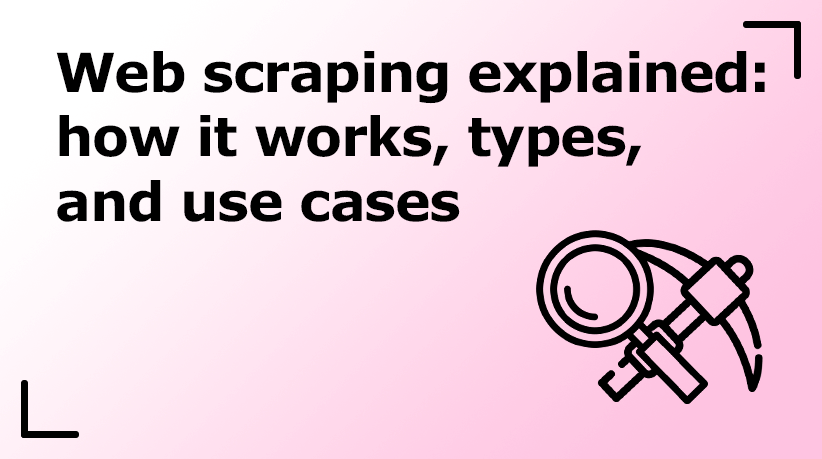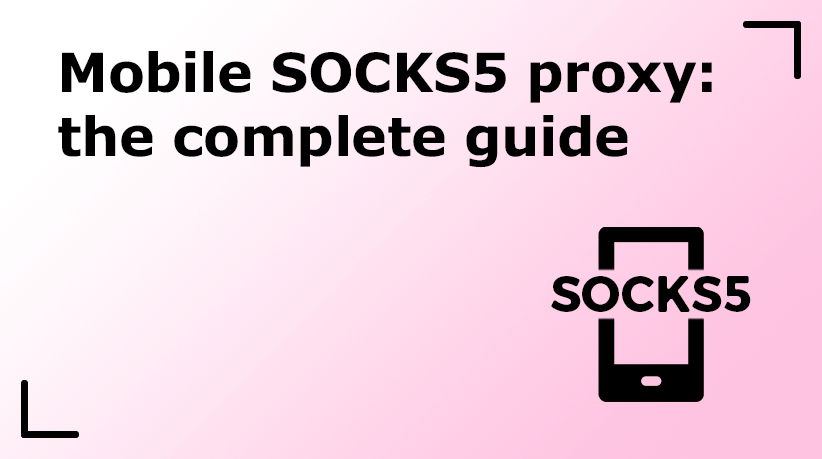Transparent Proxy vs Forward Proxy: Key Differences Explained
There are so many categories and types of proxies, including forward, transparent, reverse proxies, and more, that it can sometimes be confusing to know which one does what. However, knowing what any given proxy does is crucial before choosing which one to use for your specific application. Forward and transparent proxies are some of the categories of proxies to choose from—these two serve different purposes.
Article’s Key Takeways
- Transparent proxies and forward proxies sound similar, but they serve very different purposes in network management.
- A transparent proxy is enforced by ISPs or organizations, working invisibly to users by intercepting traffic, caching content, and filtering access, though it provides little to no anonymity.
- In contrast, a forward proxy is client-configured. It offers higher control and privacy by hiding IP addresses, bypassing geo-restrictions, and filtering content before it reaches the destination server.
- Each comes with unique advantages and drawbacks: transparent proxies are great for monitoring and policy enforcement but weak in privacy, while forward proxies enhance anonymity and flexibility but can slow down traffic or face IP blocks.
- Choosing between the two depends on whether the priority is user privacy and control or centralized traffic filtering and policy enforcement.
- ProxyWing provides both transparent and forward proxies you can rely on for business or personal use.
In this Transparent Proxy vs Forward Proxy guide, we will help you understand the difference. We will cover their key features, differences, pros and cons for each, security and piracy comparison, and more. By the end of this guide, you will clearly know how these two differ and the one to choose depending on the goals you would like to achieve. Let’s get into this.
What Is a Transparent Proxy?
A transparent proxy is a server that sits between the clients and the websites or web applications they need to access without the need for the user to configure anything. It is called a transparent proxy because the user does not even know it exists. In most cases, transparent proxies are implemented by companies and internet service providers to filter internet traffic and block access to certain content.
These proxies may also not modify the requests. That means your IP address will be sent to the websites you access and not the proxy IP. A transparent proxy intercepts the traffic, implements the configured rules (by the service provider), and then forwards the traffic to the web sever you intend to access.
What Is a Forward Proxy?
A forward proxy, on the other hand, is a server that sits in front of the client and is configured by the client to achieve certain goals, like hiding their IP address. Configuring forward proxies is done by the client, requiring users to apply content filters to the request before it is forwarded to the target web servers. The explicit proxy nature of forward proxies makes them a great choice for users who need more control and privacy when accessing the internet.
These proxies are normally used by both individuals and organizations for several applications. Individuals can use them to bypass restrictions on streaming platforms, access blocked sites, and to stay anonymous when browsing the web. Companies use forward proxies to filter content mainly. In this case, a forward proxy filters content and determines if it should be forwarded or not based on the server details included in the request.
Transparent Proxy vs Forward Proxy: Side-by-Side Comparison

These are key differences between Forward and transparent proxies
| Features | Forward Proxy | Transparent Proxy |
| Visibility to Users | Visible—the user knows it is there since it is configured by them. | Invisible—users are usually unaware that they are there. |
| Anonymity Level | High anonymity since forward proxies will typically hide your IP address. | Low level of anonymity because transparent proxies do not modify your IP address before forwarding your request to the target web server. This aspect of transparent proxies can change based on the transparent modes set. |
| Configurations | Forward proxies are configured by the user to determine the IP address they would like to use to access the internet. | Transparent proxies are usually network-enforced ( by the ISP or organization). Users usually know nothing about them. |
| Use Cases | Bypass streaming content restrictions. Browse the internet anonymously. Ad verification. Access geo-restricted websites. Caching data for fast access. | Caching content for quick access. Traffic filtering by ISP on its DNS servers. User authentication on a given network. Monitoring network traffic and network performance. |
Pros and Cons of Transparent Proxies
Transparent Proxies Pros
- Transparent proxies are useful for caching web content, which can boost browsing speeds.
- Transparent proxies help ISPs and organizations enforce certain network policies like limiting access to certain websites.
- Transparent proxies are the best option for minoring and filtering network traffic.
Transparent Proxies Cons
- Transparent proxies provide limited anonymity when browsing the web.
- With transparent proxies, users usually do not know they are being monitored.
- Transparent proxies might sometimes cause compatibility problems with certain websites.
- Transparent proxies may also affect performance if they’re not well configured.
Pros and Cons of Forward Proxies
Forward Proxies Pros
- Forward proxies hide your IP to ensure you stay anonymous when browsing the web, addressing your privacy concerns
- Forward proxies help bypass location-based limitations to websites and content on the internet.
- Forward proxies can be used to filter and block malicious content that may be sent back in response to user requests, providing more security to clients
- Forward proxies give users more control over the proxy settings since they are configured by them.
Forward Proxies Cons
- Forward proxies could slow down the internet due to the extra routing if not well configured.
- Forward proxies can be a single point of failure for several devices if they ever go offline.
- Some websites tend to block known proxy IP addresses. This can be fixed by using multiple IP addresses if your proxy provider supports this option.
Security and Privacy Considerations When Choosing Proxies
When choosing a proxy to use, it is crucial to consider security and privacy considerations. Of course, like we shared earlier, you usually have no choice over whether to use a transparent proxy because it is usually network enforcement. However, you may choose not to use the network if you find out it relies on this type of proxy and you’re not willing to have your traffic monitored.
If privacy and security are something you really care about, then we recommend using a forward proxy as it hides your IP address to ensure your connection remains anonymous. It is also crucial to choose a proxy provider with a good track record of privacy and security. Also stay away from free proxies—these usually make money by selling or using your browsing data.
Conclusion
Understanding the differences between transparent proxies and forward proxy types can be important when choosing how secure and private you would need you or your users to access the internet. For most users, forward proxies are the way to go. But if you are an organization or ISP that needs to implement certain rules on your networks, you may want to use any of the two proxy types depending on the goal you intend to achieve. We hope this guide has given you all the information you need to make this choice.
Related posts


